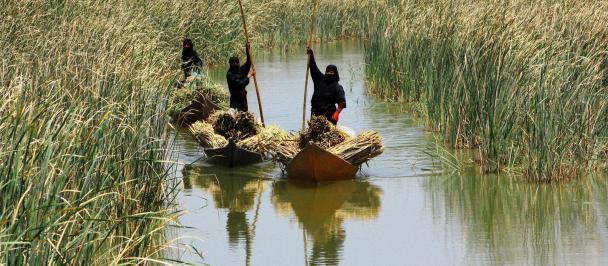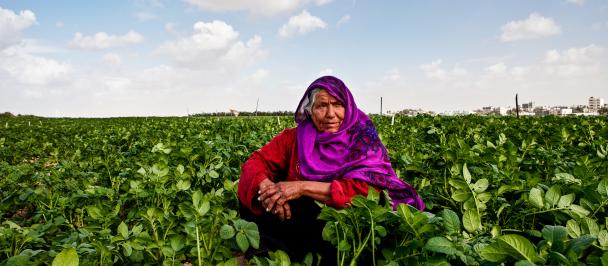The Arab region is experiencing one of the most dramatic periods of change in its history - with an escalation of conflict, a dramatic rise in poverty, and the emergence of more than 20 million refugees and internally displaced persons (IDPs). Of vital importance to the goal of recovering from crisis and putting communities back on the path to achieve the Sustainable Development Goals, most of the places experiencing conflict and hosting displaced communities are also the very parts of the region that are facing high levels of energy insecurity.
Leading UNDP’s local partnerships in the Arab region, one sees first-hand how lack of energy access can hold back the prospects for recovery and resilience in communities facing protracted displacement.
The ability of communities to cope with and rapidly recover from crisis hinges in many ways on their ability to regain access to energy. But too often countries affected by crisis are unable to rapidly bring back the type of energy systems needed for recovery. In such contexts, decentralized solutions are receiving greater attention as a means of addressing needs while setting the foundations for longer-term resilience.
In this regard, UNDP has commenced a series of new initiatives in the Arab region, led by our Country Offices and adapted to very localized needs of displaced communities. As elaborated in a new UNDP regional policy brief capturing lessons from these initiatives, we see energy access not as an end in itself, but as an enabler of resilience and putting communities on a path to recovery.
Yemen, for example, is the world’s worst humanitarian crisis, with millions facing famine risk and lack of access to water and sanitation, with breakdown of hundreds of health facilities and an unprecedented outbreak of cholera. All such challenges are exacerbated by the energy crisis in the country. Yemen was already one of the region’s most energy poor countries, and the ongoing conflict has dramatically reduced conventional energy supplies every further.

Decentralized solar solutions have arisen as one solution to ease the suffering of displaced communities. UNDP in partnership with WFP, ILO and FAO is implementing the Enhanced Rural Resilience in Yemen (ERRY) project funded by the EU, supporting among other things local deployment of decentralized solar technologies to expand energy access in schools, health facilities, small businesses, and irrigation pumping for agricultural livelihoods and food security. Decentralized solar solutions were initially provided to 20 schools, 20 health clinics, 800 households, two food markets and 20 public agencies, and this has now been scaled up to reach a further 32 schools, 32 health facilities, nine markets and 2,400 households.
Another important example is in Sudan, which hosts over 3 million internally displaced persons (IDPs), converging with high levels of energy insecurity. After a decade of conflict and displacement in Darfur, the Document for Peace in Darfur and the Darfur Development Strategy set the foundations for the return of a large number of IDPs to the Darfur region of Sudan. But as IDPs return, the lack of access to energy is one barrier to regenerating livelihoods and access to water, health and education services.
In response, UNDP in partnership with UNIDO, WHO and UN Habitat and the support of Qatar via the UN Multi-Partner Trust Fund Office, is supporting the Darfur Solar Electrification project to help the Darfur Regional Authority and the Government of Sudan build community resilience. Solar solutions are being deployed across 70 settlements for enhanced health clinics and schools, street lighting and solar water pumping, directly benefiting 7,000 households, with additional dividends for a further 35,000 households in neighbouring satellite settlements.
Beyond innovative technology solutions, UNDP has also supported upstream policy results. Around the Syria crisis for example, support has been provided to national partners in Jordan and Lebanon to integrate sustainable energy solutions into national crisis response plans, to help close the energy gap in communities hosting Syrian refugees. Through such support, UNDP and partners help empower affected communities while supporting broader goals of national stability and resilience.
Crisis contexts are characterized by high levels of complexity, reduced clarity of institutions and policies, constraints in domestic finance, and lack of data on the energy needs for effective response. One-size-fits-all approaches do not work in such settings, given the highly contextualized needs of displaced communities. Decentralized solar solutions are emerging as a practical option to empower community recovery. In regenerating livelihoods and access to water, health and education services, solar solutions can have a significant multiplier effect – accelerating recovery, fostering resilience and helping to build the bridge between humanitarian and development results.


 Locations
Locations





